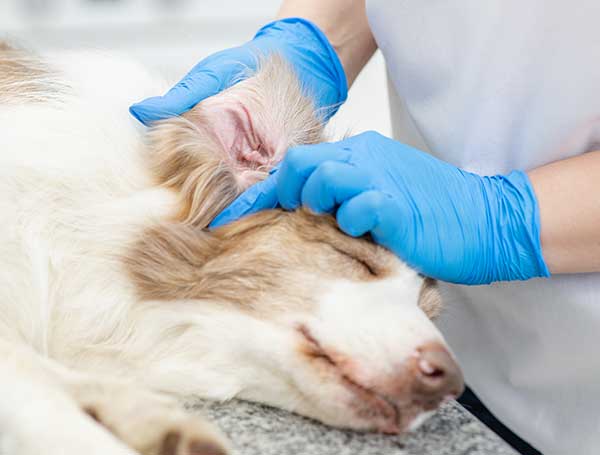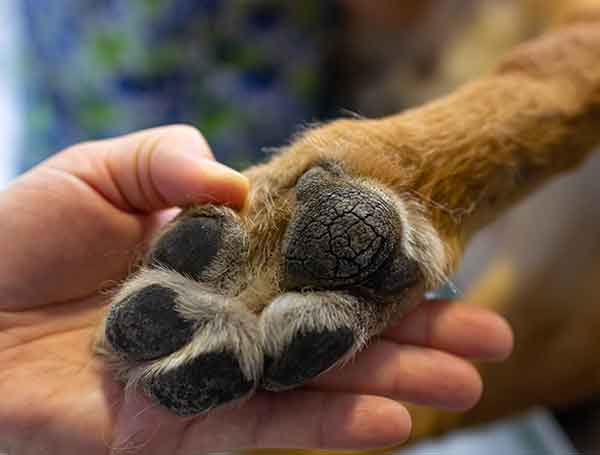Blood Glucose Test Sites and Techniques
Due to variability among species, it is essential to use a veterinary-validated blood glucose meter versus a human device for at home blood glucose monitoring.1 Blood sample collection sites often used include the ears, gums, paw pads, and elbow callus.2 Test Buddy™ Pet-Monitoring Blood Glucose System is intended for testing with fresh, capillary whole blood taken from the ear or paw pad in dogs and cats.
“Blood sample collection sites often used include the ears, gums, paw pads, and elbow callus.2“
Test Buddy® Testing Sites:
- Marginal Ear Veins are the Most Common Sampling Location.3
- Tips for success:
- Warm the ear with hands or warm cloth for 30 seconds to 2 minutes to help increase blood flow in this location.3,4
- Remember the goal is to “prick” the ear vein. In cats, this is more readily apparent, but a small flashlight may help identify the veins in dogs. Sampling the thinner edges of the ear, rather than the thicker part containing cartilage can still be successful even if the vein is not visible.3
- Both sides of the ear flap may be used for obtaining a blood sample. However, if a haired area is used, it is often helpful to shave or trim away longer hair.5 This prevents the hair from wicking away the blood droplet needed for sampling.
- Tips for success:

- Paw Pads
- Tips for success:
- Use the side of the paw pad that does not bear weight or contact the ground.3 This tissue is thinner so tends to bleed more readily and is less likely to become sore or infected since it does not contact the ground.
- The area to be sampled should be free of dirt, debris, and hair to avoid interference with the blood sampling process. Excess hair may be shaved or cut away from the area to be sampled. The pad should be clean and dry prior to lancing to obtain a good blood sample and prevent infection.5
- Only use this area if your pet does not dislike having their feet handled.
- Tips for success:

Steps to obtain a blood sample:
- Choose the site you want to sample (ear or paw pad).
- Prepare the sampling site as needed. It should be clean, dry, and free of dirt and hair.5
- Prepare your home blood glucose meter supplies. Make sure your blood glucose meter is set appropriately to dog or cat blood. Insert a test strip into the blood glucose meter so it may accept the blood sample.
- Use a small gauge needle or lancet to “prick” the test site, which should produce a small blood droplet. It may help to use your fingers to gently squeeze the area to produce a larger blood drop as needed.3
- Touch the test strip sample area to the blood droplet.
- Record the blood glucose meter reading.
- Apply pressure to the test site to stop the bleeding.
- Give your pet lots of affection and/or a low carbohydrate treat to create a positive experience in association with testing.4
Sources
1. Audrey Cook, BVM&S, MRCVS, DACVIM (SAIM), DECVIM (CA), DABVP (Feline). Diabetes: Home Monitoring. AAFP 2014.
2. 2018 AAHA Diabetes Management Guidelines for Dogs and Cats. Downloaded 7/29/2020. https://www.aaha.org/globalassets/02-guidelines/diabetes/diabetes-guidelines_final.pdf
3. Kelly D. Mitchell, BSc, DVM, DVSc, DACVIM (SAIM). Canine and Feline Diabetes Mellitus: Owner Communication, Home Monitoring and Diet. 37TH ANNUAL OAVT CONFERENCE & TRADE SHOW.
4. AAHA Videos. How to test your dog’s blood glucose at home. How to test your cat’s blood glucose at home. https://www.aaha.org/aaha-guidelines/diabetes-management/client-education/
5. Data on file. FRM-18-ILT-506

